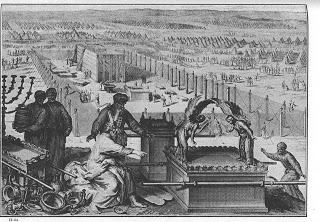In July of 1854 Henry Wadsworth Longfellow, author of the American classics which I am sure some of you know — “The Song of Hiawatha”, “Paul Revere’s Ride” and “Evangeline” — visited the Jewish cemetery of Newport, Rhode Island. At the time of the visit, cemetery tourism was a popular past time for Americans, and cemeteries were seen as a place for meditation and spirituality. In 1658, two hundred years before Longfellow’s visit to the Jewish cemetery, fifteen Jewish families of Spanish and Portuguese descent arrived in Newport, Rhode Island. They were drawn to Newport because it was an important colonial trade center. It also was known for its tradition of religious tolerance. Nineteen years after their arrival, in 1677, the Jews of Newport bought land for a cemetery. They continued to worship in private homes until 1763, when they dedicated a synagogue.
But following the Revolutionary War, as the centers of commerce shifted to New York and Boston, the fortunes of Newport declined, and with it the Jewish population. By the time of Longfellow’s visit in 1854 there were few Jewish families left in Newport.
Longfellow wrote a poem on the disorienting experience of visiting a Jewish cemetery in Newport. He begins his poem by noting how strange it is to come across the cemetery in a community that has virtually no Jews. He likens the old tombstones on the graves to the tablets broken by Moses on his descent from Mt. Sinai. He notes how the names on the gravestones are, to him, an odd combination of classic Hebrew names – Abraham and Jacob – with Spanish surnames, Rivera and Alvarez. He writes that in the now closed synagogue adjacent to the cemetery, “No Psalms of David now the silence break, No Rabbi reads the ancient Decalogue.” Longfellow wonders why this ancient people came to these shores, and in the following verse meditates upon the years of persecution that the Jewish people have endured. He writes:
Pride and humiliation hand in hand
Walked with them through the world where’er they went;
Trampled and beaten were they as the sand,
And yet unshaken as the continent.
In his poem, Longfellow expresses admiration for the Jewish people, who, he writes, stoically endured, though persecuted and oppressed throughout the ages. But he ends his poem with a lament:
But ah! what once has been shall be no more!
The groaning earth in travail and in pain
Brings forth its races, but does not restore,
And the dead nations never rise again.
Despite his admiration for the Jews, Longfellow pronounces Israel dead and buried, never to live again. That could have, in fact, come to pass had the Jewish people given up hope during our long years of exile and wandering. Yet, that hope was kept alive in many ways, not the least of which was through our liturgy and the rhythm of our calendar.
A few weeks ago we observed Tisha B’av. When the Second Temple was destroyed in 70 CE, Jerusalem was turned by Rome into a pagan city and Jews were not permitted to enter. The Rabbis who lived through these tragic times looked back in history for a way to both mourn the catastrophe that had befallen the Jewish people and find comfort and hope for the future. These Rabbinic sages turned to Jeremiah’s Lamentations over the destruction of The First Temple and Jerusalem, written 500 years earlier, as a way of giving voice to the sadness and despair they felt at the destruction in their own time. Paradoxically, the reading of Lamentations also gave them hope that just as the Jewish people had returned from exile and rebuilt the Temple in Jerusalem in Jeremiah’s time, so they too, with G-d’s help, would overcome the calamity in their time as well.
The Rabbis also incorporated special Prophetic readings into the Sabbath morning services on the seven Sabbaths that fall after Tisha B’Av leading to Rosh Hashannah. Usually the prophetic readings, or Haftorahs, are connected thematically to the Torah readings for the week. For example, the week we read about G-d calling Abraham in the Torah, we read a selection from the prophet Isaiah that refers to Abraham and his journey. Or, when we read about the plagues in Egypt in the Torah, we read a selection from the Prophet Ezekiel that mentions how G-d once humbled Egypt. In these seven weeks between Tisha B’Av and Rosh Hashannah, the prophetic portions are not connected thematically to the Torah readings. They are, instead connected to one another through the themes of comfort and the restoration of hope.
Others may have assigned the Jews to the dustbins of history, but we have always maintained hope in the future. As Jerusalem lay neglected, impoverished, and exploited by her many conquerors throughout history, the Jewish people listened to the promise of Isaiah, that Zion’s “desert will become like the Garden of Eden, and gladness and joy shall one day abide there.” Longfellow writes, sympathetically, “What once has been can be no more”. Isaiah responds,
Raise a shout together/O ruins of Jerusalem/ For G-d will comfort his people/ Will restore Jerusalem.
There is a saying in Yiddish “Gelt farloren, gor nicht farloren; mut farloren, alts farloren. “You lose your money, nothing really is lost; you lose your hope and courage, everything is lost”. Or, as the poet Naftali Herz Imber of Ukraine writes in the ninth stanza of his poem, Hatikvah (yes, there are nine stanzas!)
Hear, my people, in the lands of exile/The voice of one of our seers/Only with the very last Jew/ is there the end of our hope!
Shabbat Shalom

